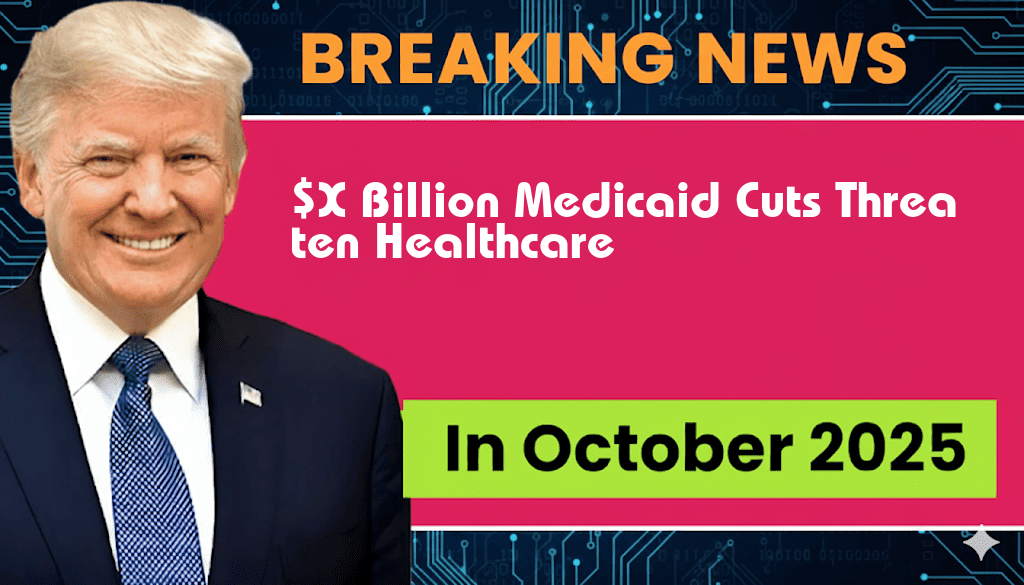Potential $X Billion Medicaid Cuts Threaten Healthcare for 5 Million Americans
A looming proposal to cut Medicaid funding by $X billion has raised significant concerns among healthcare advocates, policymakers, and millions of Americans who rely on the program for essential medical services. The proposed cuts could impact healthcare access for approximately 5 million individuals, particularly low-income families, the elderly, and those with disabilities. Proponents of the cuts argue that they are necessary to address budget deficits and reduce government spending, while opponents warn that such measures could exacerbate health disparities and lead to increased costs in other areas of the healthcare system.
Understanding the Impact of Medicaid Cuts
Medicaid, a joint federal and state program, provides health coverage to individuals and families with limited income. It plays a crucial role in the healthcare landscape, covering a wide range of services including hospital visits, preventive care, and long-term care for seniors. The proposed $X billion cuts could result in reduced funding for these services, potentially leading to the following consequences:
- Decreased Access to Care: Many providers may choose to limit the number of Medicaid patients they accept, worsening access to healthcare services.
- Increased Out-of-Pocket Costs: Patients may face higher out-of-pocket costs for essential services as coverage becomes more restrictive.
- Health Disparities: Vulnerable populations, including minorities and low-income families, could experience worsened health outcomes.
Who Would Be Affected?
The cuts could predominantly affect the following groups:
- Low-Income Families: Many families depend on Medicaid for basic healthcare needs, including children’s health services.
- The Elderly: Seniors who rely on Medicaid for nursing home care and other long-term services could face significant challenges.
- Individuals with Disabilities: Those who require ongoing medical attention and support services may find their care compromised.
Political Landscape and Responses
The proposed cuts have sparked a heated debate in Congress, with lawmakers divided along party lines. Supporters argue that reducing spending is necessary to ensure fiscal responsibility, while critics contend that such cuts undermine the very fabric of the healthcare safety net.
Organizations such as the Kaiser Family Foundation and the Health Affairs Journal have raised alarms about the potential fallout from these cuts. They highlight that the economic burden of untreated health conditions may ultimately lead to higher costs for emergency services and increased rates of chronic illness.
Potential Solutions and Alternatives
As discussions continue, several alternatives to outright cuts have been proposed:
- Targeted Reforms: Streamlining administrative processes within Medicaid could reduce costs without sacrificing patient care.
- Increased Funding for Preventive Care: Investing in preventive health measures could reduce long-term costs by improving public health outcomes.
- Enhanced State Flexibility: Allowing states to innovate within their Medicaid programs may lead to more efficient spending.
Conclusion
The potential $X billion cuts to Medicaid funding pose a serious threat to healthcare access for millions of Americans. As policymakers navigate the complexities of budgetary constraints and healthcare needs, the stakes remain high. The upcoming decisions will not only shape the future of Medicaid but also impact the health and well-being of vulnerable populations across the nation.
| Group Affected | Estimated Number Affected | Potential Consequences |
|---|---|---|
| Low-Income Families | 2.5 million | Reduced access to pediatric care |
| The Elderly | 1.5 million | Loss of long-term care services |
| Individuals with Disabilities | 1 million | Increased healthcare costs and unmet needs |
Frequently Asked Questions
What are the potential impacts of the $X billion Medicaid cuts?
The potential $X billion Medicaid cuts could significantly affect the healthcare services available to 5 million Americans, leading to reduced access to essential medical care, increased out-of-pocket costs, and potential loss of coverage for vulnerable populations.
Who will be most affected by these Medicaid cuts?
The Medicaid cuts will primarily impact low-income families, elderly individuals, and those with disabilities who rely on this program for their healthcare needs, potentially leaving them without necessary support and services.
What measures are being discussed to address these cuts?
Lawmakers and advocacy groups are exploring various measures, including legislative actions to protect funding, increasing awareness about the implications of the cuts, and proposing alternative healthcare solutions to ensure continued support for affected individuals.
How might these Medicaid cuts affect healthcare providers?
Healthcare providers may face financial strain due to reduced reimbursement rates resulting from the Medicaid cuts, which could lead to service reductions, staff layoffs, or even facility closures in some regions.
What can individuals do to advocate against these cuts?
Individuals can engage in advocacy by contacting their local representatives, participating in community forums, and joining organizations that support Medicaid, urging policymakers to reconsider or mitigate the proposed cuts.
